

Agridisk
Egypt - Alexandria

All types of cheese, classification, specification & What are the most popular types of cheese? & How is Cheese Made?
Description: The world of cheese is as varied and vibrant as the chronicles of human history itself. Imagine delving into a rich tapestry where every thread corresponds to a unique flavor, texture, age, and region. This narrative transports you to the serendipitous discovery of cheese and its meticulous evolution over time, to its meticulous classification based on varied attributes -- from age to origin. It invites you to savor the unique specifications of regional specialties, stimulated by the individuality of culture, terroir, and tradition. Delving further, it celebrates the remarkable versatility of cheese in the culinary world, showcasing how it can elevate a humble sandwich or play a starring role in gourmet gastronomy. This is not just an exploration of cheese, but a journey through time and around the globe. Ah, the tantalizing realm of cheese! A world filled with such incredible diversity that it could fill an encyclopedia. From the pungently rich camembert of French origin to the creamy mozzarella birthed in Italy, cheese is an integral part of global culinary traditions. The history and origins of this near-universal delight, undeniably, have shaped the remarkable variety we witness on our cheese boards today. Skip back 7,000 years and you'll land in the cradle of civilization, Mesopotamia, where the wheel and the first forms of writing were conceived. It’s where many believe cheese initially came to be, born from the simple yet elegant dance of milk, bacteria, and time. Just imagine, the room filled with clay vessels brimming over with milk, curdling and setting the stage for a culinary revolution. This elementary discovery, truly a case of serendipity, became the cornerstone for all cheese production we know today. From these humble beginnings, the craft of cheesemaking spread across the globe alongside human migration and trade. Along this journey, cheese began adapting to each unique location, shaping and transforming with the breath of the environment, livestock, and materials at hand. This adaptation driven by geographical limitations and local resources resulted in that burst of diverse cheese flavors. Take the Roquefort for example! This stunning blue cheese from France owes its character to the unique Penicillium roqueforti, a mold thriving in the caves of Roquefort-sur-Soulzon. Again, a happy accident discovering these caves infuse the cheese with its signature intense tang. A sun-drenched patch of Italian land bears the buffalo yielding rich milk that fashions the exquisite mozzarella, the beauty of "terroir" truly shining through its flavor. The journey never ceases but is a constant tumble through time. Even technology played its part in this evolution, cue industrialization. With the advent of the industrial revolution in the 18th and 19th centuries, cheese production swelled up from quaint homes and small-scale operations to commercial factories essential for mass production. This shift paved the way for inventions like processed cheese hitting supermarket shelves, once again diversifying the wide tapestry of cheese types. Cheese, a humble mix of milk and microbes, has undergone transformations as diverse and dramatic as human civilization itself. Each cheese slice narrates a tale of its origin, a narrative subtly seasoned by the local culture, geography and the flux of time. From firm cheddar to crumbly feta to gooey raclette, the vast assortment is a testament to the incredible impact of history and origin on the evolution of cheese. One must marvel at how this simple, fermentative act in a Mesopotamian kitchen became a global culinary craft, celebrating the unity of palate, tradition, and the love for this gastronomic wonder. There's a whole world of cheese out there to explore, so let it brie! Building on the rich heritage of cheese, it's time to delve into the various categories of cheese and uncover what makes each of them stand out. Classification of cheese revolves around four main variables: milk source, processing, aging and flavoring. Let's start with the source of the milk. Cheese, in its myriad forms, can come from diverse livestock - cows, goats, sheep, even camels or yaks! The milk type greatly influences the texture, color, and flavor of the cheese. Cow's milk, for instance, yields a creamy, subtle flavor, while goat's milk results in a noticeably tangy, soft-bodied cheese. Sheep's milk, on the other hand, gives us a rich, buttery cheese with a higher fat content. Processing also plays an enormous role in cheese categorization. The addition of a specific type of bacteria or mold helps determine the cheese's character. For example, soft cheeses like Ricotta or Cottage, are only slightly processed and hence retain a high moisture content lending them a smooth, creamy profile. Hard cheeses, such as Parmesan or Cheddar, have most of the moisture pressed out, concentrating the flavor and creating a firmer, denser texture. Aging, or as cheese makers romantically put it - affinage, is another deciding factor. Aged cheese is more complex and intense in flavor. Fresh cheeses like feta or burrata are consumed within days of making, retaining a pure, milk-like essence. However, other types like Brie or Gouda are kept for longer periods, developing strong notes and depth in their flavor profile. The king of the aged cheese, Parmigiano Reggiano, can be matured for over two years! Last but not least, weaving additional flavors into the cheese makes it truly unique. This can be done by introducing a variety of elements. For instance, herbs can be mixed into goat's cheese to add an aromatic touch. Cheese like Colby-Jack can be seasoned with spicy jalapeños for an extra kick. Some cheeses are even bathed in wine or beer - imbuing them with pleasantly robust profiles. Thus, the parameters of milk type, processing, aging period, and added flavors together determine the uniqueness of every cheese variety. To taste cheese is to embark on an adventure - exploring different regions, traditions, and flavors. From the creamy lushness of a well-made Brie to the sharp bite of mature Blue Stilton, the world of cheese offers unlimited culinary delights waiting to be savored. With enthusiasm, appetite, and a bit of daring, anyone can set off on an exhilarating journey through the wonderful world of cheese! An exploration into the world of cheeses enables us to set foot on a flavorful journey spanning various regions around the globe. Each cheese tells a unique story, harking back to its roots in local cultures, traditions, and soil. With a realm consisting of hard, semi-hard, soft, blue, and several other varieties, each cheese possesses detailed taste profiles intricacies in production methods, and rich histories. This dive into the fascinating abyss of cheese world is not merely to ponder on the flavors but to encapsulate an understanding of how something as simple as cheese can comprise such diversity and complexity. For food lovers and culinary enthusiasts around the world, cheese checks all the boxes - taste, texture, aroma, and versatility. Delving into the diverse universe of cheese, one finds an enchanting maze of flavors and tales stemming right from the grassy pastures across the globe. There's soft cheese, decadently creamy in texture, often with a rind, offering a world of pungency and flavor. An addictively gooey Brie, a rich and tangy Camembert, or a delightfully runny Epoisses, they're impeccably delicate and exceptionally flavorful, perfect for spreading over crispy artisan bread or accompanying a robust red wine. Then there's semi-soft cheese, like the briny, fudgy Havarti, or a young Gouda with its buttery richness and slightly sweet undernotes. Hard cheese, aged to perfection, full of sharp, intense flavors that explode in the mouth with each bite. The firm, crumbly Cheddar, nutty and slightly sweet, or the Parmigiano-Reggiano with its granular texture and a taste that sings of savory umami and a touch of sweetness. Then there's the world of blue cheese, with their characteristic veining of edible mold, rendering them a bold, robust flavor, balanced beautifully by a creamy, melt-in-the-mouth texture - be it the spicy and crumbly Stilton or the creamy, mild Gorgonzola. Exploration doesn't stop there, with many more cheeses waiting to satiate the adventurous palate, including the smoked varieties, the spiced ones, and the ones dotted with fruits or nuts for an enchanting play of flavors. Discovering cheese is like unfolding a world map, where each type leads to a country, a region, with distinct stories of its people, their traditions and culture, all encapsulated beautifully within those very layers and nuances of flavors. Ah! In a world full of cheese, one lifetime surely feels insufficient! So, let's start tasting one cheese at a time. To cheese, and beyond! Cheeses are often classified not only by their consistency but also by various characteristics such as the type of milk used in production (cow, goat, sheep), how it's treated (pasteurized or raw), and the length and conditions of aging. Fresh cheeses, like ricotta or mozzarella, are a delight in their simplicity – unaged and unripened, exuding a mild, delicate flavor that is perfect for light recipes or as a topping on salads or desserts. Chevre, often made from goat's milk, is another fantastic fresh cheese that boasts a tangy flavor profile. Fior di latte, a mozzarella variant produced from cow's milk instead of the traditional water buffalo's, lends a creamier flavor to dishes. Harder cheeses such as Pecorino Romano or Manchego, examples of sheep's milk cheeses, offer a distinct, strong flavor that are notably magnificent when grated over dishes or eaten in small amounts because of their saltiness. Now, savoring cheese is not an exclusive experience; pairing them with foods can broaden their flavor and refine your gastronomical adventure. Classic pairings mostly involve fruits and wines -- Manchego and quince paste, Roquefort and Sauternes. These are tried and tested duos where the sweetness of the fruit or wine balances the saltiness of the cheese; it's harmony on a plate! For more experimental pairings, a fusion of flavors could be just as exciting. Imagine the creamy texture and tangy taste of Feta cheese crumbled over watermelon slices for a refreshing summer snack. How about drizzling a bit of honey on a Gorgonzola to enhance its complex flavors? Or perhaps, serving a sharp Blue Stilton with dark chocolate - an unconventional duo that will surprise with their complementary robust flavors. Food pairings with cheese are a thrilling exploration, a vibrant dance of flavors in every bite - a testament to the unique connection we all share with food. Throughout this exploration, we have navigated the depths of cheese classifications, uncovering how factors such as moisture content, aging process, and fat content subtly or drastically alter a cheese's identity. Moreover, our voyage into the world of cheese pairing has provided insights into traditional and innovative combinations, allowing us to appreciate how this humble dairy product enhances culinary experiences. The art of cheese pairing is indeed a testimony to the idea that cheese is not just a piece of food; it is an inspiration, a catalyst that ignites the creativity and passion of food enthusiasts. Here's hoping that this flavorful journey has encouraged you to embark on a gastronomic adventure of your own, experimenting with the rich and varied world of cheese. The story of regional cheeses transforms the world into a kitchen, cataloging the finest aspects of places through taste, texture, and aroma. The tradition of cheesemaking allows us to experience the unique heritage a locale has to offer, an exciting prospect for any discerning palate in pursuit of culinary adventures. Consider, for instance, a nibble of Manchego, a flavorful cheese hailing from the La Mancha region of Spain. This semi-aged cheese, exclusively made from the milk of Manchega sheep, is a sensory delight that brings a balance of piquancy and creaminess. The distinctive zigzag pattern adorning its rind pays homage to the ancient practice of forming cheese in woven baskets. In every bite, we taste the vibrancy of Spanish culture, the charm of the rural landscape, and the centuries-old traditions that make it unique. Or how about a savory slice of Gruyère, a cheese native to Switzerland. Hard and slightly grainy in texture, it embodies Swiss quality and tradition. The mild, slightly salty flavor reflects the grazing lands of the cows whose milk makes this delightful product. Baked into a quiche or melted over boiled potatoes, the flavors unfold on the tongue, delivering the mountainous beauty and serene pastoral life that is Switzerland. Let's not forget the soft-yet-bold French Camembert, loved for its creamy, mushroomy flavor. It is a cheese that literally melts in the mouth, transporting you to the green pastures of Normandy. The chilling caress of the wind, the dew on the grass, the mild mustiness of the soil- all these nuances you can taste in just one bite of this cheese. Meanwhile, the United States is far from being left behind in the cheese world. The country's diverse geography has given rise to a plethora of regional cheeses. The Vermont Cheddar, for example, revered for its sharp, full-bodied taste, mirrors the rugged beauty and hearty spirit of the cold Northeastern state. And who could forget the world-famous Wisconsin cheese? Whether it’s a tangy Muenster, a rich Havarti, or a smoky Gouda, the region’s fertile soil, and fine traditional milking processes confer a burst of vibrant flavors in every bite. Embarking on a cheese-tasting journey underscores the joy of discovery- the delightful surprises that the medley of textures, flavors, and aroma each cheese embodies offer. More than just a culinary staple, regional cheeses represent a kaleidoscope of stories, narrating the love, tenacity, and pride of the people behind the glorious cheese tradition in every bite. So canonize every cheese-eating experience, whether enjoyed alone or shared amongst culinary comrades. There exists no deep dive more indulgent than exploring the world through its myriad cheese offerings. Revel in each bite, revel in each sip of wine that accompanies the tasting, and most of all, revel in the bond that food, especially cheese, creates among us. To fall in love with cheese is easy. To understand and appreciate its depth takes time and passion. But rest assured, once you start on this path, you will find that the universe of regional cheeses has no end, offering uniquely delightful experiences with every single slice. So, here’s to the enriched and cultured palate, and a grand cheese adventure for all! Cheddar and its ability to melt to perfection make it a favorite for sauces, pasta, or quiches, introducing an exciting buttery layer to your culinary creations. The slightly sharp Monterey Jack, on the other hand, easily melting into an ooey-gooey treat, becomes a luscious stuffing for enchiladas or chilies. Meanwhile, the somewhat pungent Blue Cheese, on salad dressings or sprinkled on a crispy flatbread with honey, marries sweet and salty notes in an unforgettable tango. Then there's the elegant Swiss cheese, introducing a mild nutty character to quiches and sandwiches, or blending beautifully with croissants for a flavorful breakfast. No discussion about cheese can overlook Feta. Originating from Greece, this robust brined curd cheese adds zing to salads, amplifies the glossy lavishness of olive oil-tossed pasta, or simply tops the humble avocado toast with delicious Mediterranean memories. Mozzarella’s versatility is no less, working as the crowning jewel on a Margherita pizza or the gooey center in breaded mozzarella sticks. Confidently venture into making your fresh array of cheese-based dishes with Ricotta. This whey cheese pairs exquisitely in spinach and ricotta cannelloni, as a dessert cheese with its sweet undertones, or jazzing up your morning toast. Gourmet enthusiasts would vouch for truffled cheese, subtly introducing earthy sophistication to mashed potatoes, or a toothsome Mac 'n Cheese. For an unexpected twist, try grating hard cheeses like Parmigiano-Reggiano or Pecorino Romano over cooked vegetables or a bowl of fresh summer fruit; this brings the modest produce aisle's charm to the gourmet dining table! Remember, cheese is a humble ingredient that pairs well with both sweet and savory companions. From dark chocolate to apples, honey to olives, there's a wide spectrum ready to be unveiled. Cheese can be leveraged to elevate the simplest of dishes; think grilled sandwiches or scrambled eggs, all the way to gourmet lobster Thermidor! Incorporating cheese into your cooking is fulfilling, not just because it can enhance the flavors of any dish but also because it is a testament to the rich culinary history it carries. From rustic farmhouses to high-end eateries, cheese has cemented its primacy as an essential component in cuisines around the world. The distinct flavors, diversity, and mastery in cheese-making reflect the uniqueness of each region, giving a new meaning to our exploration of global cuisines. Engaging with cheese in cooking is not merely a practice; it's an indulgence, an adventure. It's a chance to experiment, explore, and connect with rich cultures and centuries-old traditions. After all, food, presumably good food, has been a universal language, and what better way to converse than through the glorious world of cheese! From its humble beginnings to its role in gastronomical delights, cheese remains a culinary phenomenon that transcends cultures and eras. Its classification makes for a compelling study, opening up a myriad of possibilities when it comes to taste, texture, and age. The global reach of regional cheeses, each with their own unique story and specifications, are testament to the unifying nature of food and our eternal quest for flavor and variety. Ultimately, understanding and appreciating the full breadth and depth of the world of cheese enhances our culinary experiences, informing our choices and allowing us to fully appreciate the versatility of this marvelous ingredient. With each type of cheese you encounter, remember that you are sampling a slice of history from a specific part of the world, and savor the experience. People also ask : Welcome to the fascinating world of cheese, a universe filled with creamy textures, explosive flavors, and heartwarming heritage. From the sharp tang of a vintage cheddar to the sublime creaminess of a well-crafted brie, cheese is not just food, but an expression of culture, character, and tradition. This engaging journey will not just lead you through the myriad types of cheese available across the globe but gradually make you privy to the secrets hidden in their crevices. By delving deep into the critical ingredients and processes that govern cheese-making, you are not just stepping into the shoes of a seasoned cheesemaker but are also opening up a world of endless culinary possibilities. If there's one thing that brings immense joy to a foodie-chef's heart and tickles the taste buds, it's unquestionably cheese. Its universe is mind-bogglingly vast, varying in flavor from extraordinarily pungent to delicately mild, textures ranging from creamy smooth to grainy hard, and colors spiraling from dazzling white to deep blue. Food explorers can experience a dazzling whirlwind of gastronomic adventure, simply by delving into the vastly diverse types of cheese. So, grab your cheese knife, and embark on this edible quest! Soft cheeses like Brie and Camembert grace the cheeseboards with their creamy, buttery luxuriousness. Both hail from France, and exhibit bloomy, edible white rinds, developed by inoculating the cheese with penicillium candidum, a type of mold. Their earthy, tangy, and slightly mushroomy flavor profiles tend to be milder, making them a perfect starter for cheese newbies. They pair beautifully with fresh fruits and light white wines. Within the semi-soft cheese category, havarti and gouda are top contenders. Danish in origin, havarti is a creamy cheese with tiny, irregular holes, and has a slightly acidic, buttery flavor, making it ideal for sandwiches. Gouda on the other hand, originates from the Netherlands and boasts a rich, creamy, mildly sweet and nutty flavor. Its exceptional melting quality makes it a darling for grilled sandwiches or a gooey mac and cheese. Parmigiano-Reggiano, Cheddar, and Manchego are good examples of hard cheeses. Parmigiano-Reggiano has a grainy texture, a strong, nutty taste and is an Italian classic. It's perfect for grating over pasta or serving on a cheese board with a drizzle of honey. Cheddar exhibits a somewhat crumbly texture and comes in an array of flavors, from mild to extra-sharp. It's the go-to cheese for burgers and nachos. Manchego, from Spain, with its firm, sometimes gritty texture, and nutty, sweet flavor, pairs stunningly well with sherry. Blue cheese, such as Roquefort, Gorgonzola, and Stilton, is distinguished by the vivid, blue-green streaks of veining achieved through the introduction of penicillium roqueforti or penicillium glaucum molds during production. They are known for their strong, pungent flavors. Roquefort is creamy, crumbly, and tangy, while Gorgonzola is more mild, creamy and sweet. Stilton, often called the "king of cheeses," is rich and tangy, but smoother than Roquefort. Pair blue cheese with bold wines and robust honey for an unforgettable culinary experience. A well-crafted cheese voyage transcends mere food indulgence, it's the exploration of colorful cultures, ancient traditions, and bonding over love for food. It's important not to be afraid to tread into unfamiliar terrains. Remember, each cheese has its own story to tell, and the journey is as delightful as the first bite. Enjoy these beautiful morsels of artisanal craft and be ready to discover more. Bon appétit! Undisputed Essentials for Cheese-Making Feasting on the subjects of diverse cheese types and the pairing principles, wine pairings to pay your palate its honor, and the complex fascination of flavors, molds’ role in this culinary artistry, we now direct our appetitive attention toward the elementary yet crucial part - the ingredients essential to the making of cheese. Armed with knowledge on these key ingredients, any aspiring cheese maker is well equipped for culinary craftsmanship at its finest. Undeniably, success will not arrive magically in the first attempt, but every trial will bring its insights and nearness to ultimate satisfaction—friends and family waiting in eager anticipation to indulge in the creation borne out of passion and dedication. Remember, cheese-making is a fine art, and every artist crafts and recrafts until perfection. The constant pursuit of excellence is driven by the joy of creation and a love for bringing people together over a shared table. After all, isn’t that what food is all about? Creating cheese is an art form in itself, almost like sculpting flavors from raw, unfurnished elements. It's a delicate balance of timing, ingredients, and processing techniques that together decides the ultimate profile of the cheese. Let's dive into the step-by-step process of creating this culinary delight using these six basic ingredients: Milk, Rennet, Starter Culture, Salt, Calcium Chloride, and Cheese Wax. When it comes to cheese, the type of milk used determines the texture, flavor, and even color. Cows, goats, buffaloes — each animal's milk paints a unique portrait of tangibility and flavor on the palette. Whole, pasteurized, and raw milk are boiled at different temperatures depending on what kind of cheese one is planning to create. It sets the stage, making milk ready to welcome other elements. Rennet then comes into the picture as the coagulation maestro. Traditionally extracted from the stomachs of ruminant mammals, it's this ingredient that segregates milk into curds (used in cheese-making) and whey. For our plant-loving food explorers, fret not! There are plenty of vegetarian alternatives available -- microbial or fermentation-produced rennet to name a couple. Now enters the Starter culture. This very term embodies a pool of bacteria that contributes largely to a cheese's ultimate flavor, texture and development. Depending on the type and quantity of culture, cheeses can range from mild and creamy to tangy, sharp, and complex. This bacterial starter consumes lactose, present in milk, and produces lactic acid. The resulting acidification is a beautiful transformation -- all part of the cheese drama. Salt is the next hero in this cheesy narrative, a multifaceted ingredient that has more roles than you might suspect. Besides enhancing the flavor, salt acts as a preservative by controlling the growth of undesirable bacteria. It also contributes to the development of the cheese's rind and helps to draw out moisture, further aiding in the cheese's maturation. Bending its robust shoulders in support, we find Calcium Chloride. It's not an ingredient you’ll find in every cheese, but when it makes its appearance, it’s to strengthen the curds and thereby sticking up for consistency. Especially beneficial when using pasteurized milk, as it tends to have a weaker curd structure. And finally, we have Cheese Wax, the protective shield. It keeps unwanted mould and bacteria out. Apart from protecting, it's also responsible for retaining moisture in the cheese during the aging process. This colorful coating grades up the entire look and feel of cheese. So there we have it, cheese-making demystified. It's a meticulously orchestrated orchestra where each ingredient has a specific role to play, all working in perfect synchrony to create that mouth-watering slice of creamy, savory goodness that fits perfectly on top of your favorite cracker. Despite many centuries of cheesemaking artistry, we are still enchanted by the seemingly endless potential of this food, as we twirl strings of mozzarella on our forks, crumble aged cheddar over our salads, or spread soft brie on a crusty baguette. Cheese, in its myriad forms, has captivated the tastes of civilizations for centuries, becoming an irreplaceable part of culinary traditions and mealtime rituals worldwide. The sheer variety of cheese reflects not just the art of cheesemaking but also the cultural preferences and dietary ingenuity of different regions. From the stringy, coveted stretchiness of Mozzarella to the sharp and crumbly textures of Cheddar; from the hard, crystalline surface of Parmesan to the soft, creamy heart of Brie; and from the sweet, aged notes of Gouda to the bold, tangy punch of Blue Cheese—each type of cheese tells its own unique story. This exploration dives into the world of the most beloved cheeses, unravelling their history, uses, and reasons for their persistent popularity among connoisseurs and casual diners alike. Ah, Mozzarella, the quintessential cheese that turns a good pizza into a spectacular culinary masterpiece. Isn't it just the mere thought of that gooey, stringy lusciousness that sends one's taste buds into a frenzy? Let's dive into the delectable world of Mozzarella and discover why it’s the crowning jewel of every pizza. Mozzarella is the Einstein of melting cheeses. It possesses the perfect balance of moisture, elasticity, and fat content that allows it to melt uniformly, creating that signature pizza cheese pull that makes hearts flutter and Instagram feeds buzz. This cheese doesn't go around overpowering the other ingredients; rather, it subtly elevates the flavors of the toppings. Its delicate milky taste provides a creamy canvas, coaxing the vibrant notes of the tomato sauce and the diverse pizza toppings to shine through. Because of its perfect composition, Mozzarella browns beautifully under high heat. Those tantalizing golden spots that grace the surface are not just gorgeous; they are tiny flavor pockets, contributing a slightly toasted taste to the overall flavor profile. Texture matters, and Mozzarella is the perfect textural complement to the crisp crust and the rich tomato sauce, offering a unique chewiness that is irreplaceable. Whether it's the fresh, spongy kind or the low-moisture, denser variety, it's all about that moorish bite. It's all about harmony on a pizza. Mozzarella acts as a culinary glue, melding the toppings with the sauce and crust, ensuring each slice is cohesive and utterly satisfying. This unification under the banner of creamy goodness is why bites of pizza are consistently delightful from the tip to the crust. In the end, every pizza sings a personal ode to Mozzarella, a humble cheese that gracefully turns a simple dough into a symphony of flavor and texture. Next time you're indulging in a slice, take a moment to savor the melty magnificence that is Mozzarella – the undisputed crowning jewel of pizza. Affection for Cheddar stems from its profound versatility. Its bold flavor profile makes it a stalwart companion, capable of standing up to the most aggressive flavor partners. Its taste spectrum, ranging from the mellow, creamy young Cheddars to the assertive, almost spicy quality of aged varieties, allows it to be a team player in a multitude of dishes. Whether it’s a gentle tang complementing a delicate pastry or a robust punch in a hearty shepherd’s pie, Cheddar's flavor flexibility is a cook's dream. The melting quality of Cheddar is a romance in itself. Unlike Mozzarella, which becomes stringy, Cheddar melts into a velvety pool that lends itself to rich sauces, gratins, and perfectly gooey grilled cheese sandwiches. It doesn't just melt; it envelops ingredients in a warm, cheese-laden hug, transforming any dish into comfort food par excellence. But Cheddar is not just for melting. In its raw form, the cheese brings texture and a delectable sharpness to salads and sandwiches. A well-aged Cheddar can be crumbled for an added bite, giving an unexpected and welcome crunch amidst the softer textures of greens and breads. As a culinary chameleon, Cheddar takes on the role of the supporting character or the star of the show with equal aplomb. It pairs with fruits and wines, making it an essential item for the most discerning of cheeseboards. Imagine an apple pie with a cheddar crust or a glass of robust red wine with slivers of aged Cheddar - it's difficult not to salivate. And let's not forget the health benefits. Cheddar is a good source of protein and calcium. While it should be enjoyed in moderation, as all good things should be, it provides a dose of these essential nutrients alongside its taste sensations. Ultimately, Cheddar's supremacy in the cheese hierarchy is a testament to its adaptability. So next time you're whipping up a kitchen creation, whether it's a quick snack or a complex entree, don’t forget to invite Cheddar. It's the guest that never disappoints, turning the simplest dish into something truly memorable. Ah, Parmesan! A culinary maestro adept at transforming the mundane into the magnificent. Regally perched atop many a kitchen shelf, this noble cheese wields its power with grace and subtlety. It's not just a topping; it's a transformation. When that familiar crumbly texture and salty, nutty flavor meets with the simplest of dishes, it's an elevation to gourmet status — a sprinkle of refinement that enchants the palate. Parmesan packs an umami punch that enlivens any dish with depth. A grating over risotto adds a wealth of savoriness, turning a humble rice dish into a divine experience. Aged for a minimum of 12 months, this cheese brings a complexity of flavor that novice cheeses can't imitate. The longer it ages, the more it decrypts flavor notes ranging from fruity to savory, which can take a basic pasta sauce from good to unparalleled. In the culinary world, finishing a dish is about that last touch that ties everything together. Drizzling olive oil, a twist of pepper, or a shaving of Parmesan – these are marks of a chef who knows the value of crescendo in their concerto. Ever imagined how a bowl of minestrone could sing? Enter Parmesan, with its magic to infuse a broth with richness beyond the sum of its parts. Serving with a garnish of freshly grated Parmesan breathes life into even the sleepiest of soups. Those leftover rinds no one knows what to do with? They hold the key to a crispy revelation — Parmesan crisps. These lacy, crunchy delights can be broken over salads, soups, or served as a snack that simply shouts sophistication. Traditional pesto isn't complete without a generous helping of Parmesan. It balances the sharpness of fresh basil and the pungency of garlic, marrying all ingredients in harmonious bliss — a testament to the symphonic potential of Parmesan in unifying diverse flavors. When stirred into the creamy, al dente grains of a meticulously cooked risotto, Parmesan acts not just as a flavor enhancer, but as a creamy texture agent. It rounds out each spoonful with a velvety mouthfeel that's absolutely swoon-worthy. A mere sprinkle transforms a simple green salad into an elegantly dressed affair. With its dense granules, Parmesan lends a salty bite that's bold enough to stand up to robust greens yet wise enough not to overshadow the tender ones. Layered atop a vegetable gratin, Parmesan not only invites a golden crust to form but also infuses every morsel with dignified flavor. This is the crowning glory that distinguishes a gratin with Parmesan as an exquisite centerpiece at the dining table.All types of cheese, classification, specification & How is Cheese Made?
Brief History and Origin of Cheese
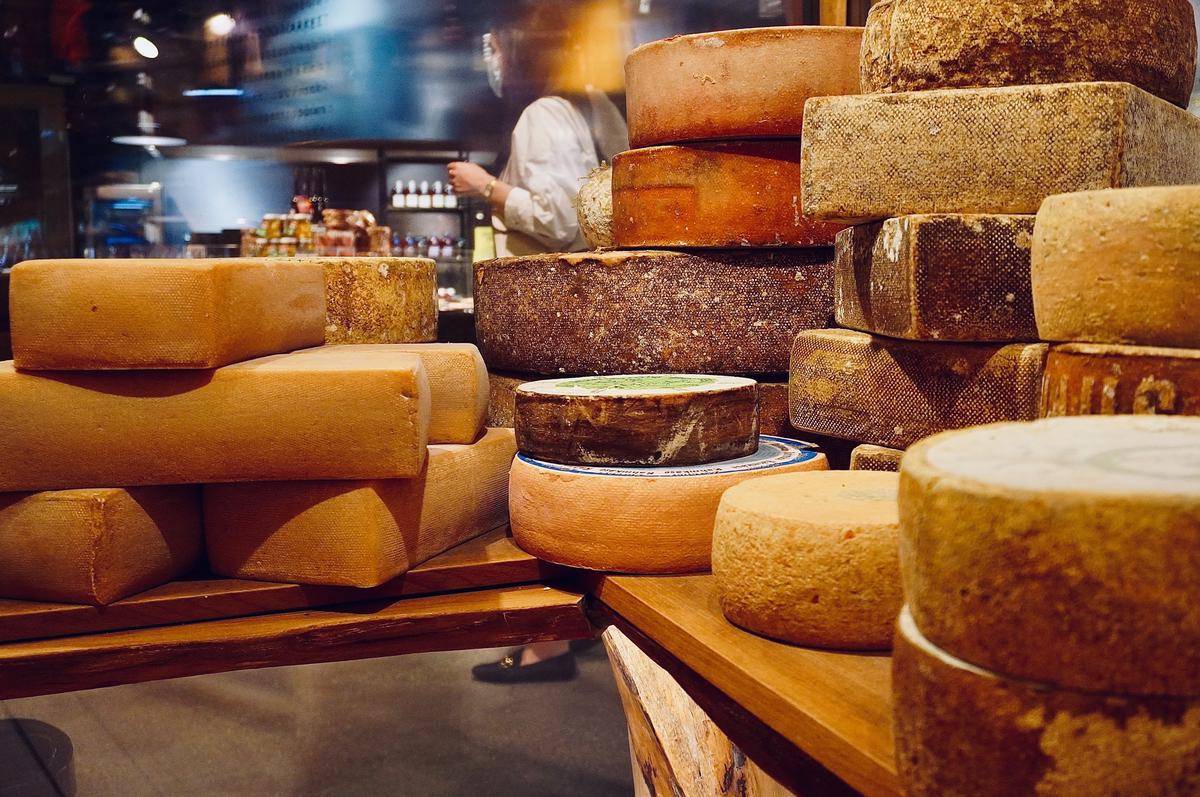
Classification of Cheese
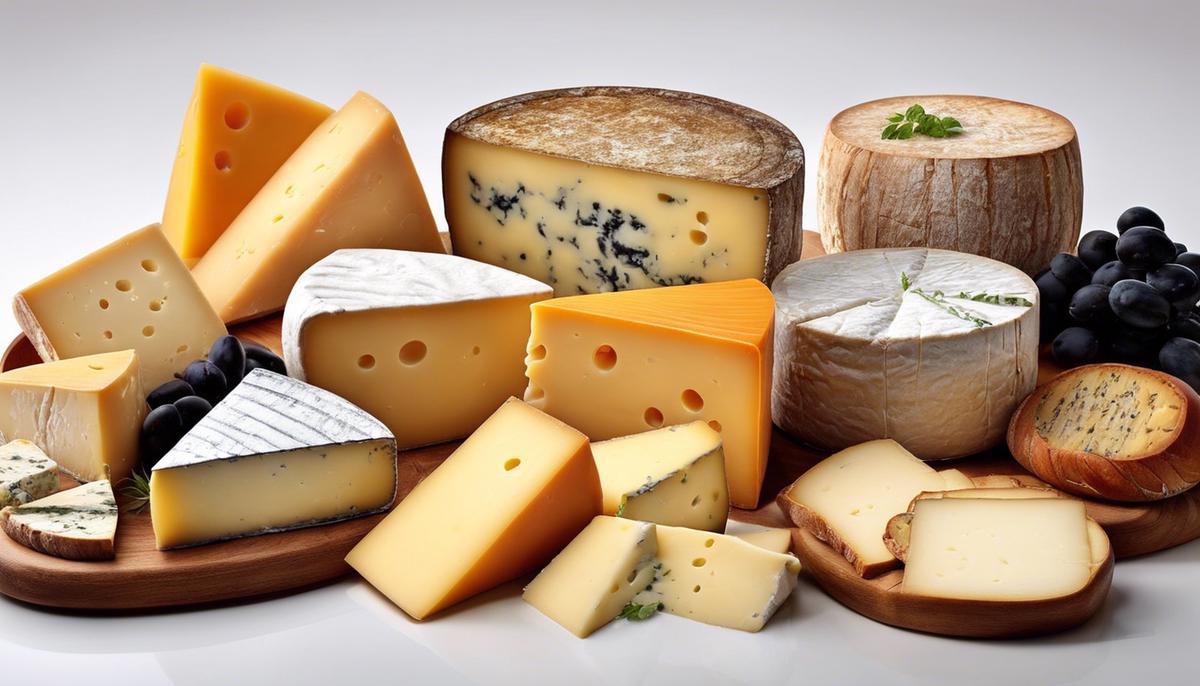
Types of cheese & cheese classification
The Various Types of Cheese

Cheese Classifications and Pairings

Regional Cheese and their Unique Specifications
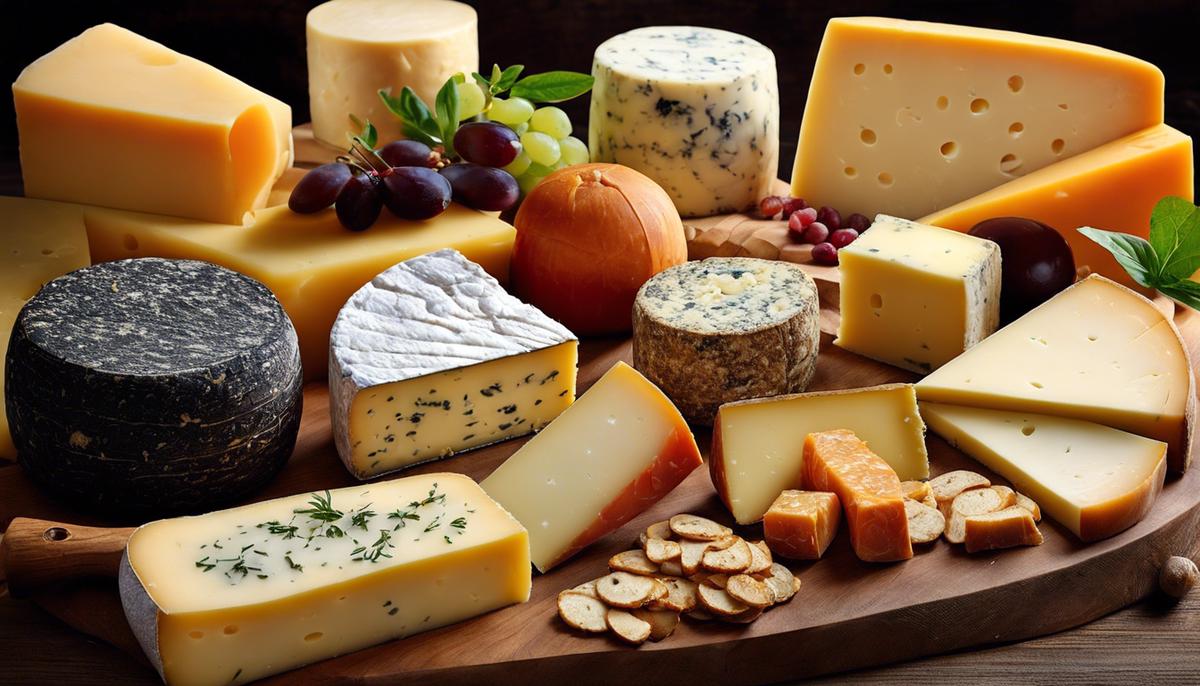
Cheese Based Culinary Delights
Diving straight into the heady world of cheese combinations, let's explore the art of pairing different varieties to uplift simple dishes to new dazzling heights.
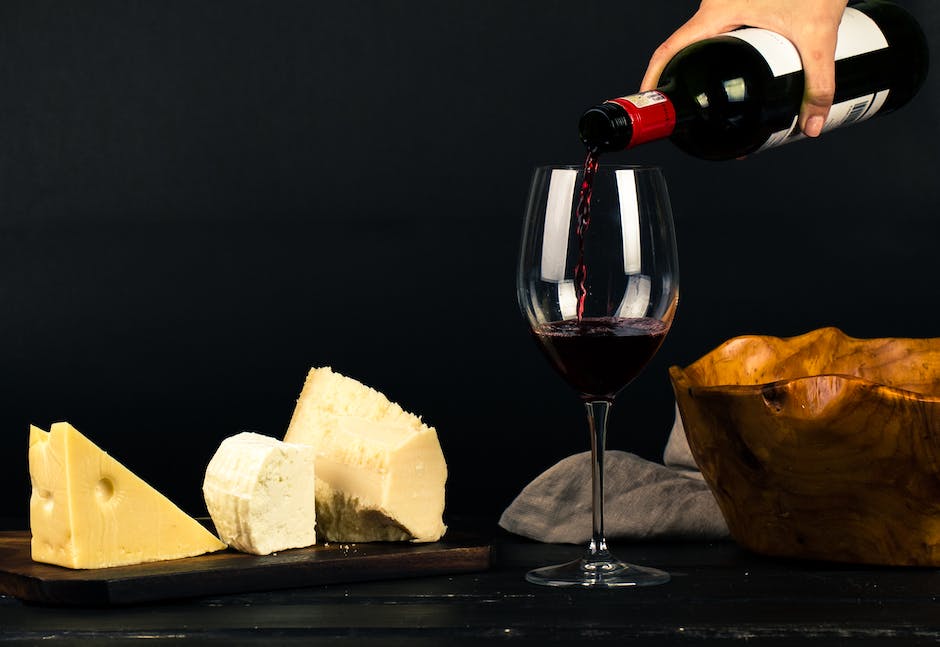
How is Cheese Made?
Understanding Types of Cheese
The Intricate World of Cheese: Variety, Flavor, and Pairing Principles
Soft Cheese: The Delicate Crowd-Pleasers
Semi-Soft Cheese: Creamy and Delectably Meltable
Hard Cheese: Textural delights with Concentrated Flavors
Blue Cheese: Bold, Complex, and Intensely Flavorful
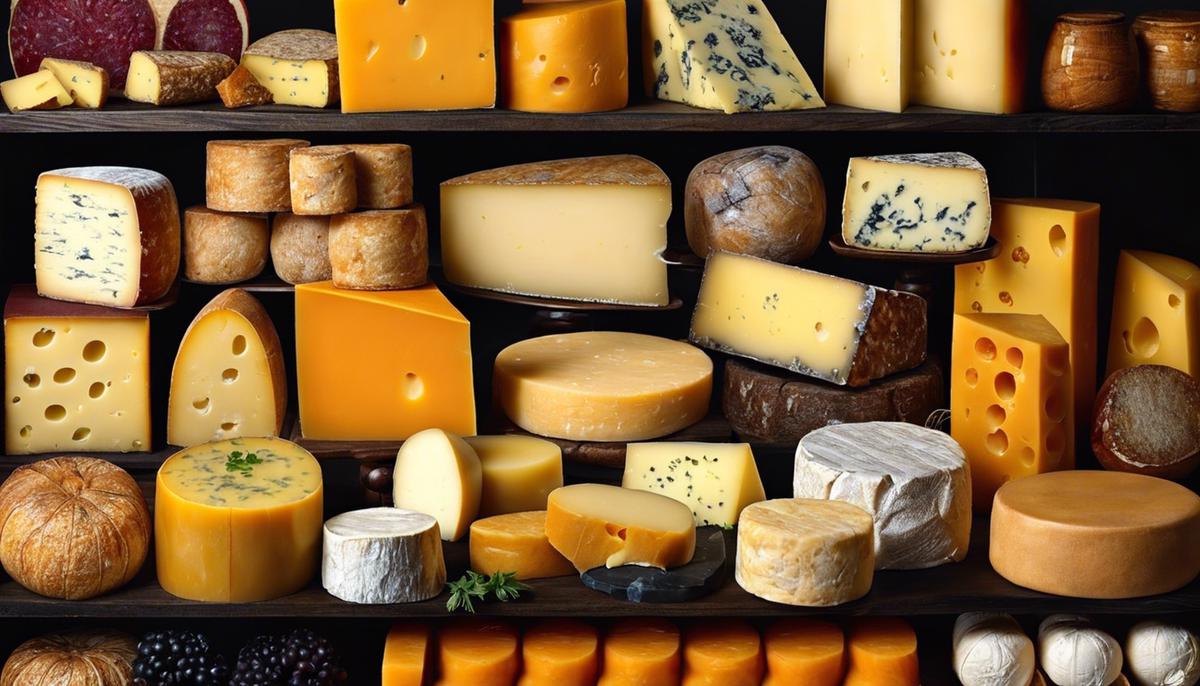
Cheese-Making Ingredients

Cheese-Making Process
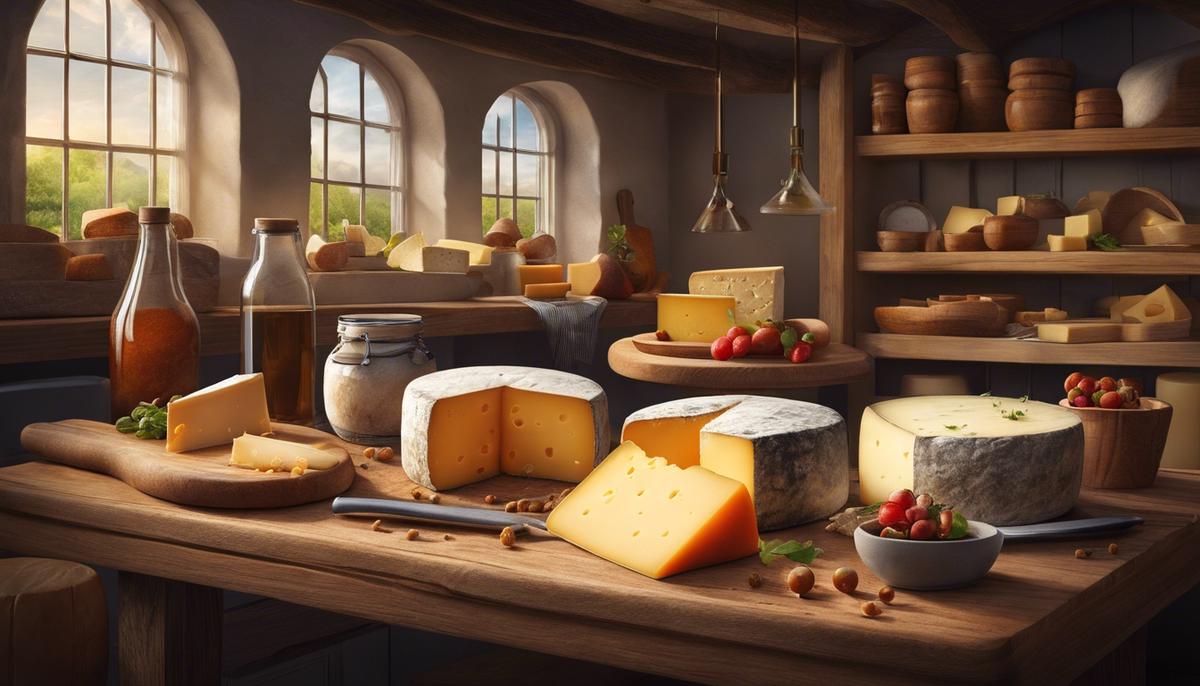
What are the most popular types of cheese?
Mozzarella
Melts Like a Dream
Subtle Flavor Enhancer
The Perfect Brown
Texture Royalty
Unites All Ingredients
Cheddar
Cheddar cheese, that darling of the dairy aisle, with its tantalizingly sharp bite and oh-so-satisfiable creamy texture, is the kitchen's equivalent of a culinary Swiss Army knife. Here's why this cheese doesn't just reign; it rules with an iron fist in a velvet glove.
Parmesan
Bold Flavor Bravado:
Age Is More Than a Number:
The Finishing Flourish:
Soup's Secret Weapon:
Crispy Garnish Guru:
Umami Unleashed in Pesto:
Risotto's Resplendent Partner:
Salad's Sophisticated Twist:
The Gracious Gratin Go-To: